Product: Wine Aging Tool
Research:
When I first read about the Wine Aging tool, I reacted with skepticism, as I imagine most folks would. Replicating the effect of cellaring a wine for a year in ONE SECOND? How can this be? It’s tempting to be dismissive, but like many 30-something women, I love my wine, and if there’s a way to enhance my wine-drinking experience, I want to know about it.
My friend Sam, who graciously assisted me with testing the wine ager, and who is much more science-minded than I (as in, he is an actual scientist), assisted with the research (by which I mean he did it for me).
Sam told me that his assumption following the reading he did was that the tool causes “a controlled redox reaction catalyzed by the copper/gold/silver alloy,” which results in “the oxidation/reduction of the acids and esters, or the conversion of one to the other.” Those sound like legitimate science words to me! On to the vino!
Hypothesis:
We will be able to taste distinct differences in each glass of wine that has been touched with the wine aging tool for a set amount of time. If we don’t, we will still have fun, because there will be a lot of wine.
Experiment:
I invited over a few of my science-minded friends who also enjoy wine to join me for a tasting and dinner. The documentation that comes with the tool suggests that you taste our un-“aged” wine, and then dip the tool in for a second, taste again, and so on until you are pleased with the flavor. I felt it would be too easy for us to have a placebo effect if we did it this way, so instead I put out three wine glasses for everyone, and poured three different “ages” into the glasses so that we could taste side by side and be absolutely sure of what we were experiencing.
White Wine
One wine for which I’m very familiar with the effects of aging is Riesling, so I chose that as our white wine for the evening. I love aged Riesling, but it is most readily available and affordable when it is very young, fruity, and sweet. Indeed, our first pour matched this flavor profile and was not particularly to anyone’s liking.
Our second pour was “aged” for two years. We all remained pretty skeptical right up until we had our second sip. It was easy to doubt: I had literally held this tool, without moving it, in the second pour for two seconds. What could have changed? The change, however, was undeniable: the wine became less overtly fruity and the sweetness mellowed, giving a flavor that most of us vastly preferred over the first pour. Success!
The third pour was “aged” for five years and the qualities I love in an aged Riesling started to come out – higher acidity, less fruit, only hints of sweetness, and notes of petrol (which, yes, sounds disgusting unless you love aged Riesling).
We were mostly split between preferring the second and the third pour, and it was fun to see that we had different preferences.
Red Wine
For our red of the evening I chose a Syrah, since I’m a fan of spicy reds. Unfortunately, the first pour of this wine was not especially good. It was really harsh, with lots of very aggressive tannins.
Our second pour was “aged” for three years and it was considerably mellowed: it was richer, smoother, and less tannic. We all vastly preferred it over the first pour.
The third pour was “aged” for five years and basically lost a lot of its bite, but wasn’t especially interesting either.
My goal for the wines we tasted was to buy young and inexpensive, but still delicious bottles that would be suitable for aging, and I’m afraid I was steered a bit off track in this particular case. The documentation that comes with the wine aging tool specifies that the tool will have no positive effect on mediocre wine, and we can now attest this is true. Don’t think you can buy a liter of “two buck chuck” and make it into an oenophile-worthy pour with the wine aging tool. Not great wine is not great forever. I will note that the tool still made the wine more drinkable, but it definitely didn’t make it delicious.
There were a few questions I had about the tool before I took it home to try it, that I imagine others will have as well, so here are the answers:
1) What if I age wine for ONE HUNDRED YEARS?
We tried this with the Riesling and basically the wine didn’t taste like anything anymore (my notes say “Reverse Jesus”). There may be some wines that can be aged for this long and still be delicious, but most wines can only age for so long until they either become disgusting or flavorless. Fortunately/unfortunately, most of us will never be faced with the decision to drink our wine now or age it for 100 years.
2) What if I use the tool on beer?
We tried this with a brown ale, and we all enjoyed the result – it was a little smoother and richer. That being said, we all preferred the original version.
3) What if I use the tool on grape juice?
Alas, you won’t magically get wine. What you will get is a less sweet and more acidic grape juice, which personally I found much more appealing. So hey, break it out for breakfast if you so desire. The tool will never wear down and is effective for life, so feel free to conduct your own silly experiments. The world was not meant to be taken seriously.
Conclusion:
While it would be impossible to know without a Time Turner whether the wine you age with the wine aging tool tastes exactly the same as if it were truly aged, we all agree that the aging tool definitely has an effect on the flavor. It was especially fun to be able to do a wine tasting with six pours using only two bottles of wine, and I highly recommend this. It’s important to remember that you can’t go backwards, so be cautious with experimenting and don’t waste your wine. I’m looking forward to trying it out again soon, and especially to being able to enjoy the flavors I love in an aged Riesling much more often!


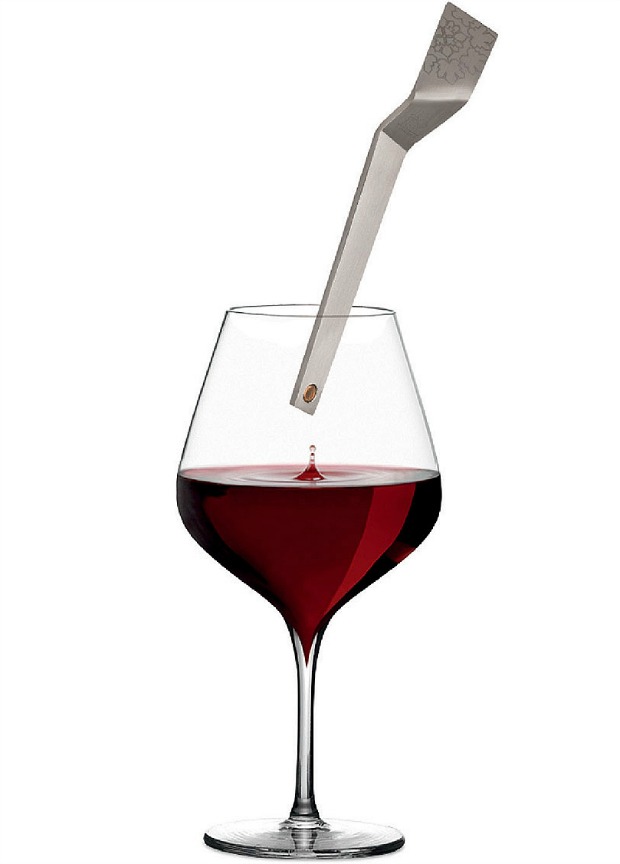
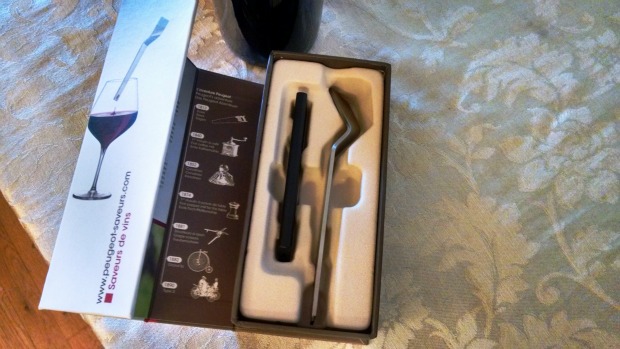
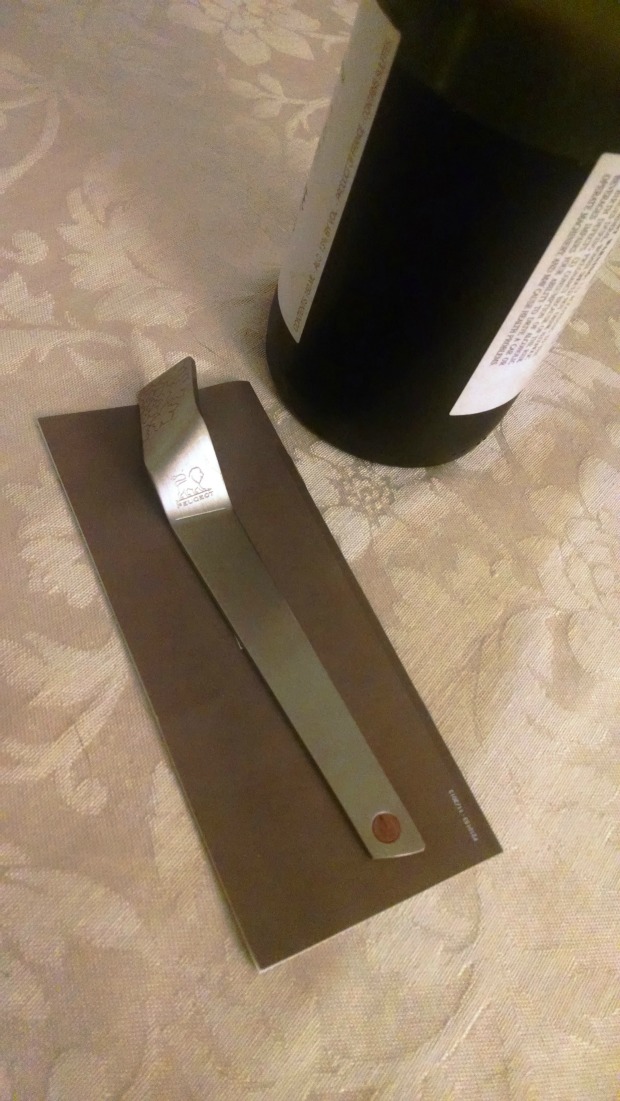
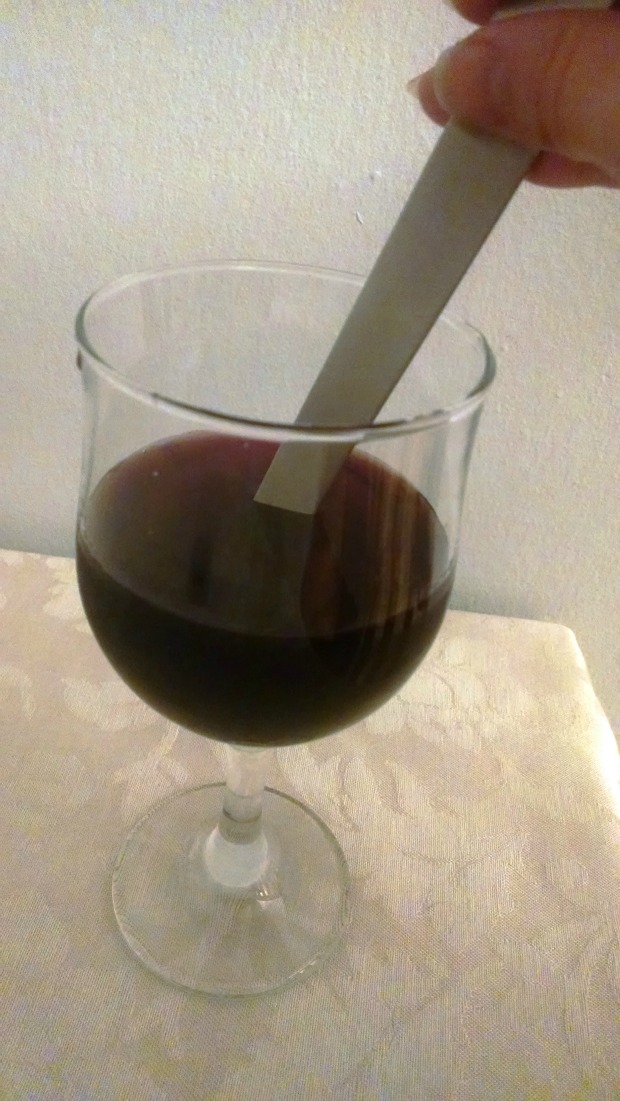
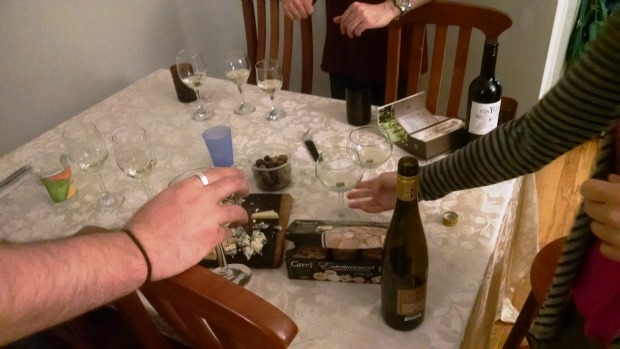

1 Comment
Very interesting tool.